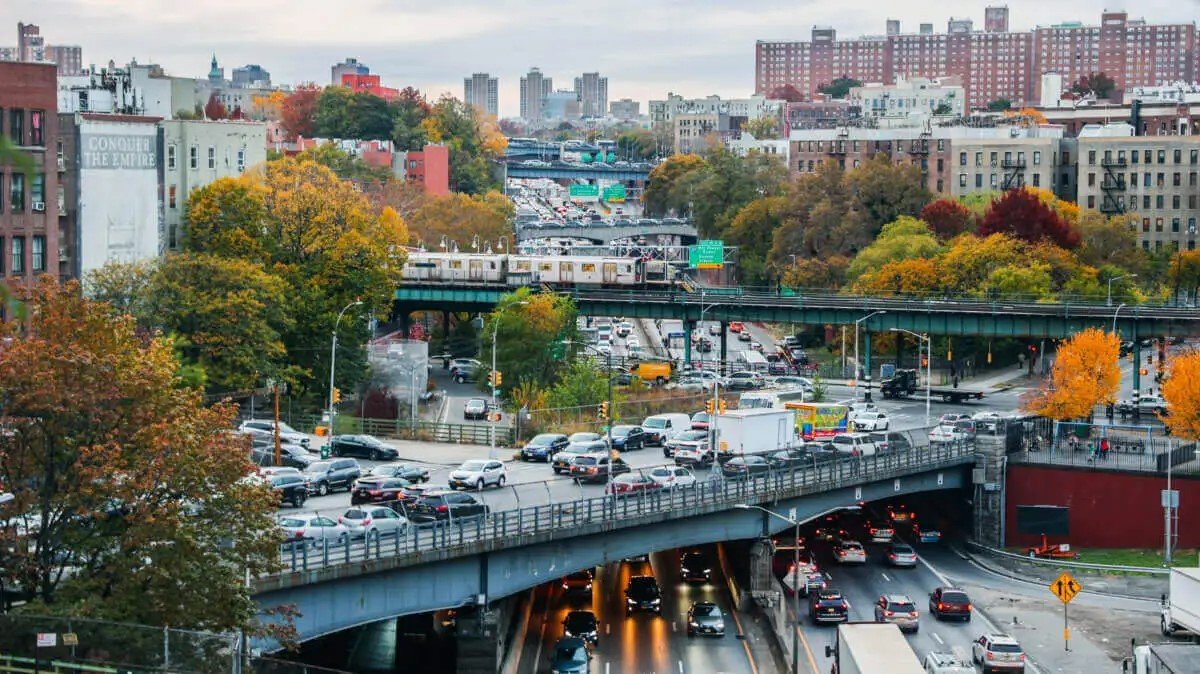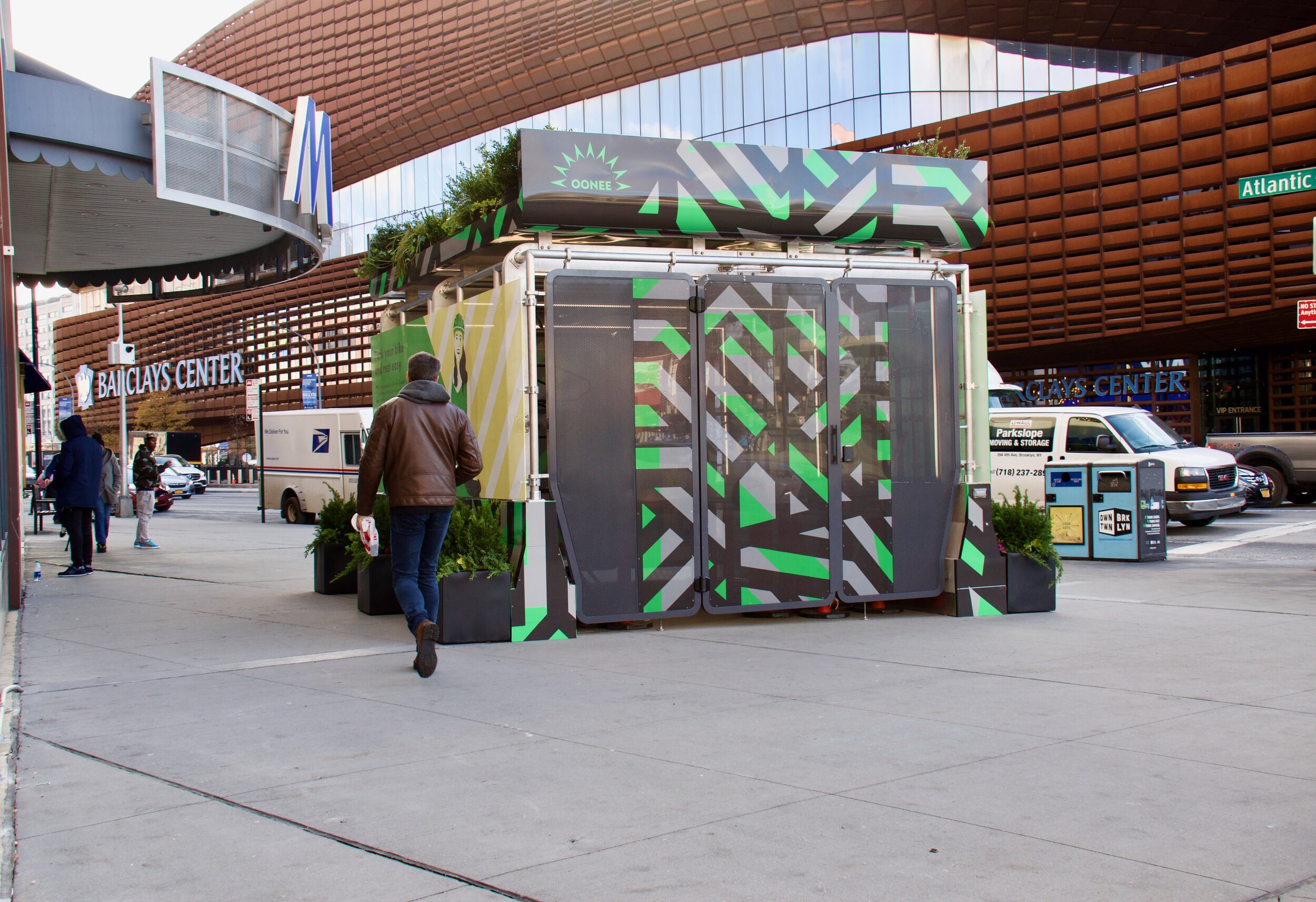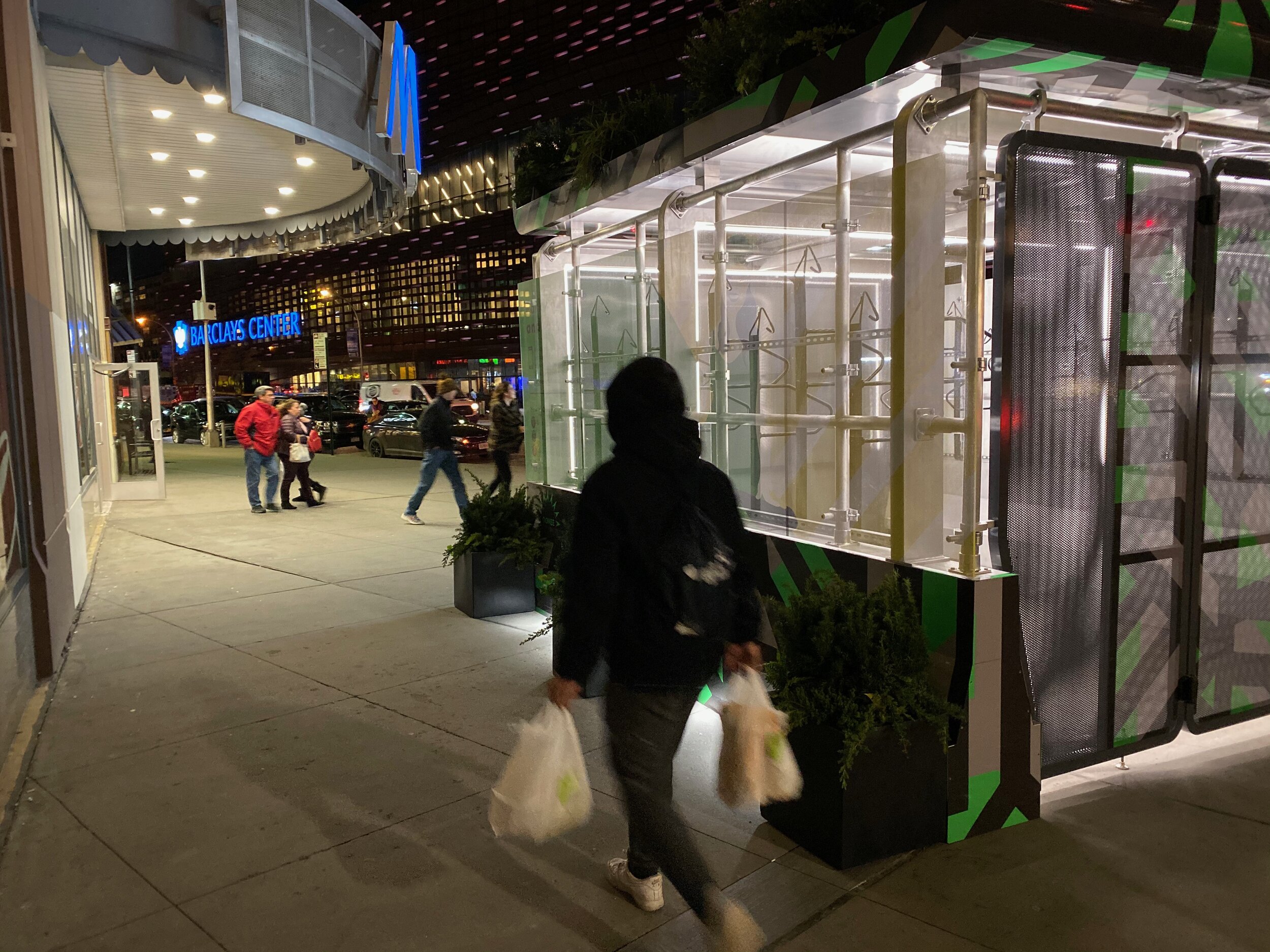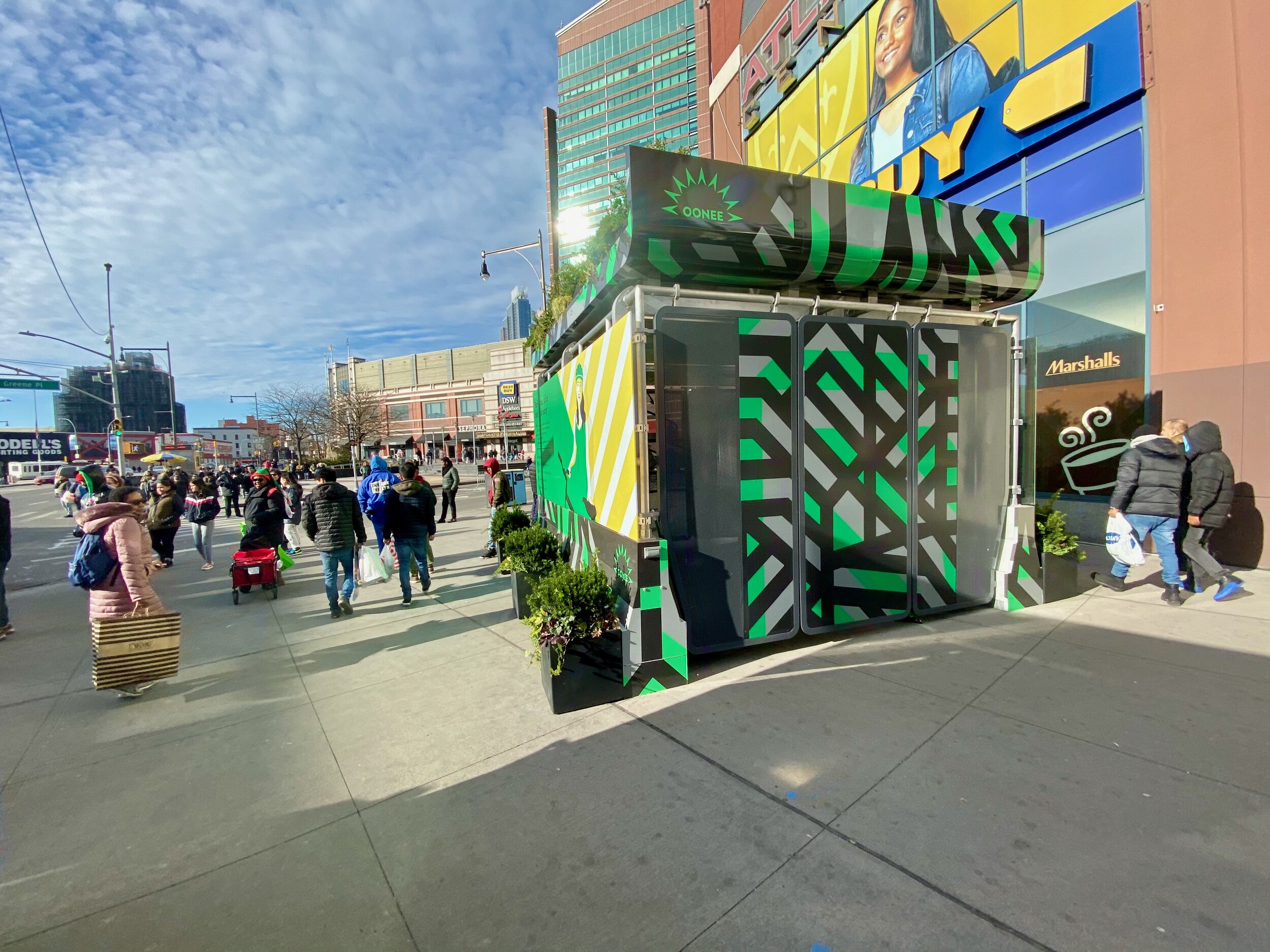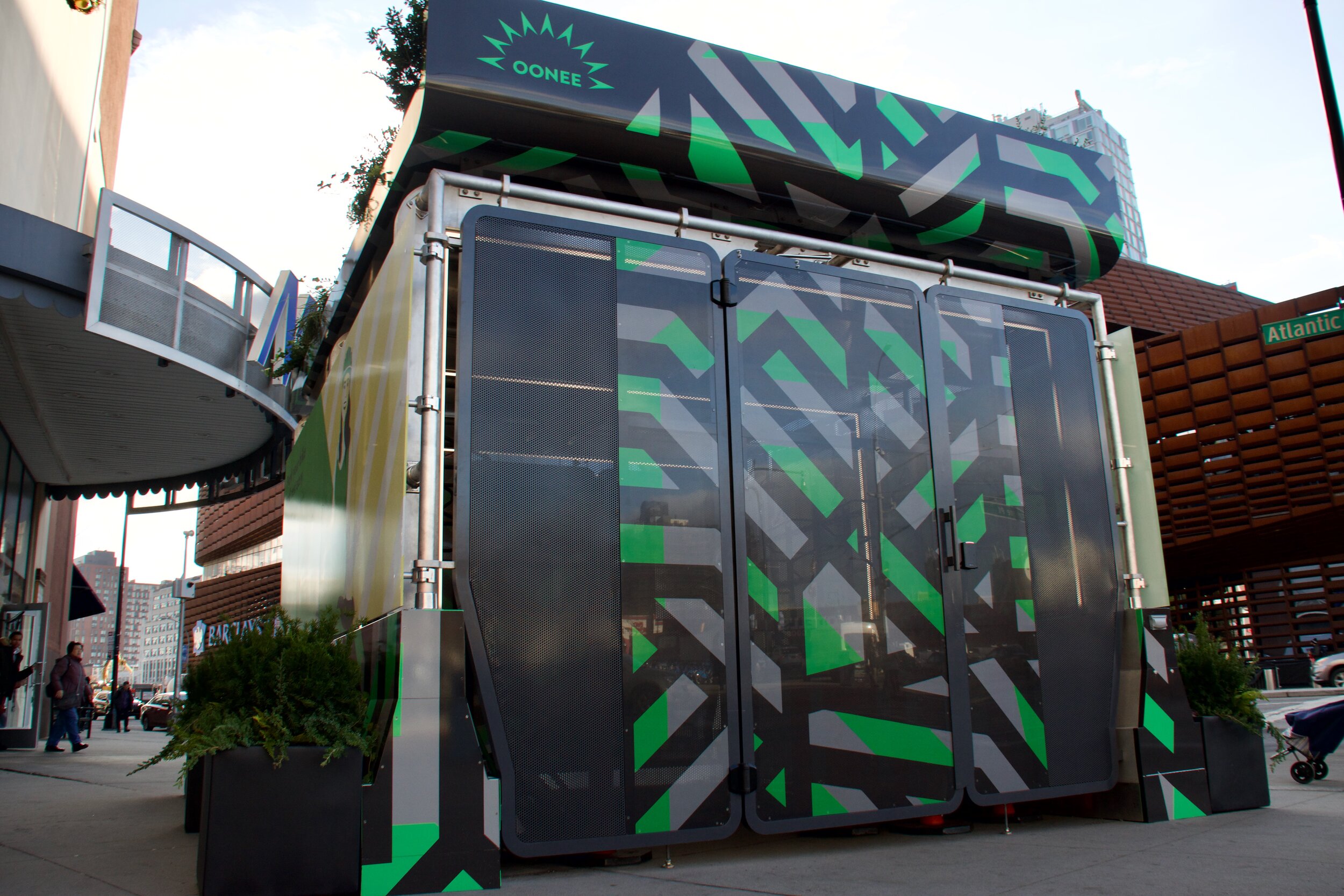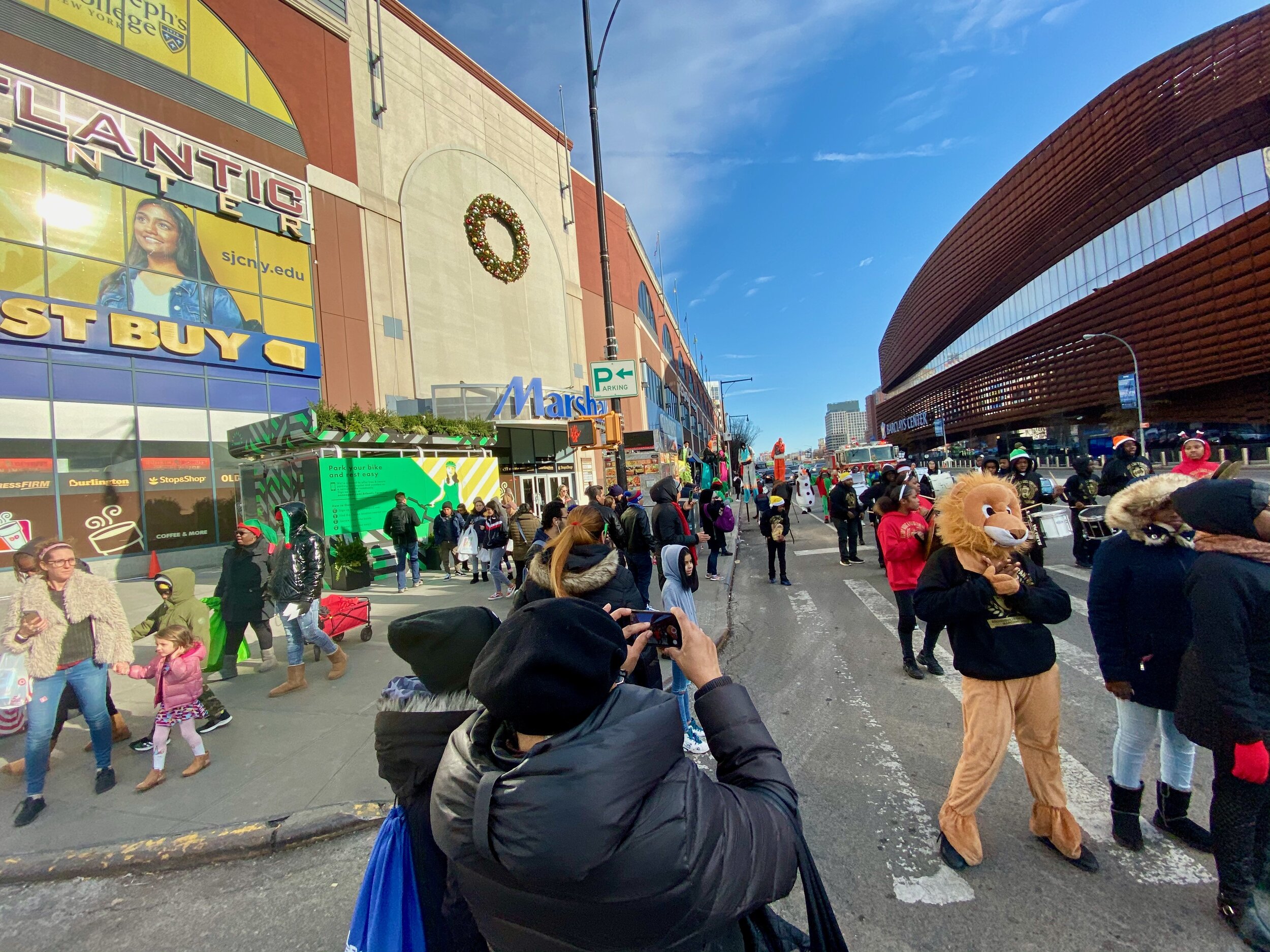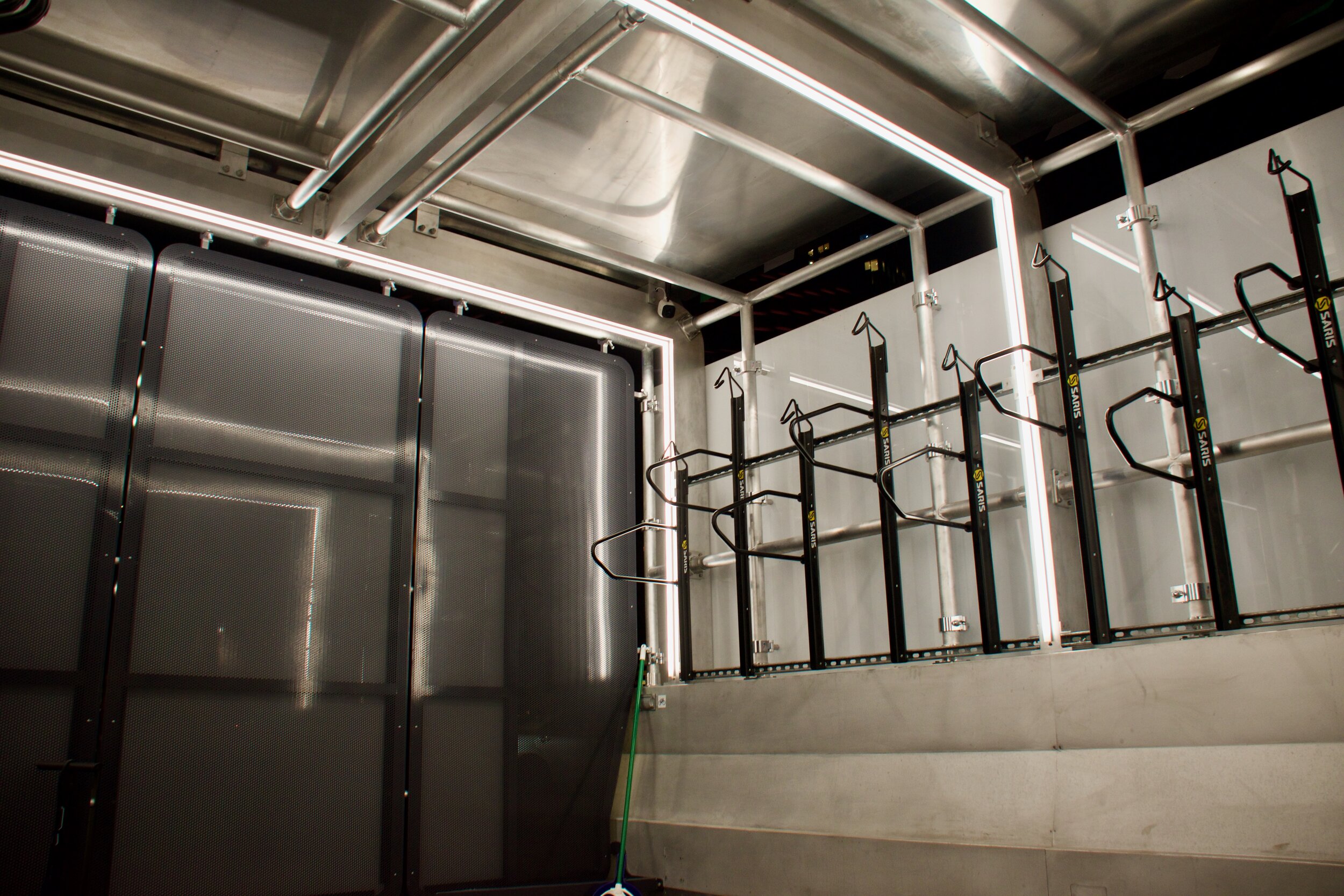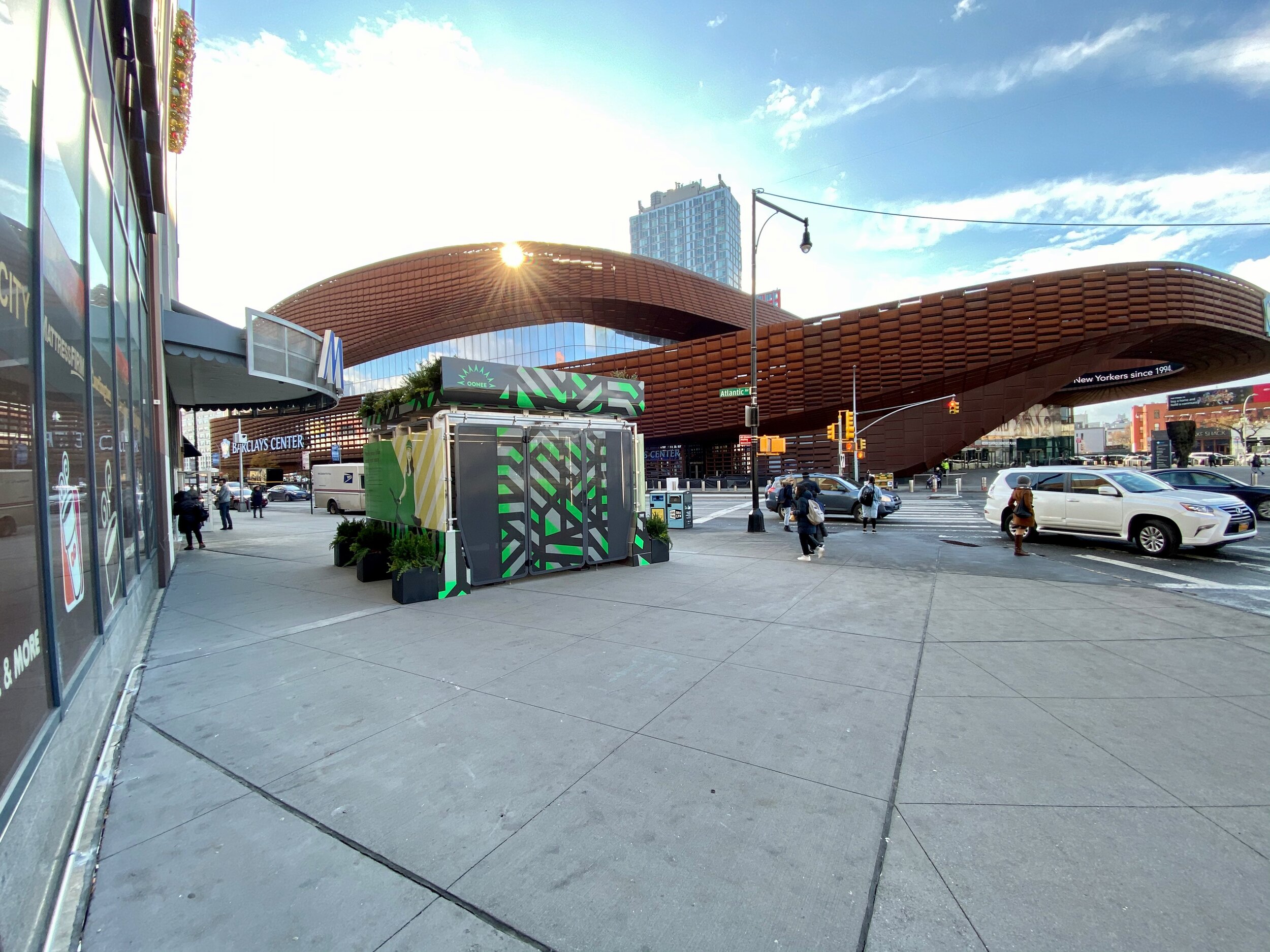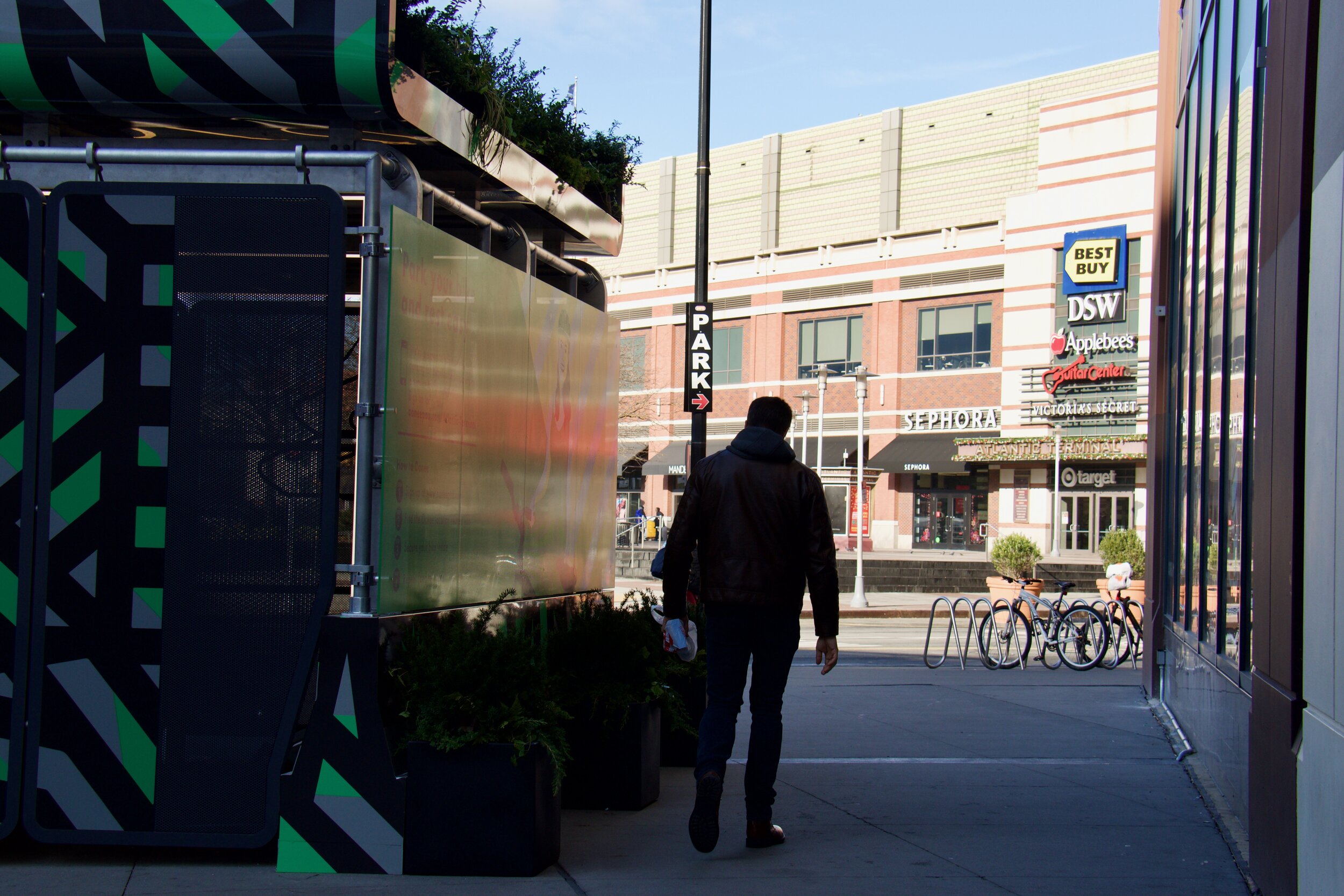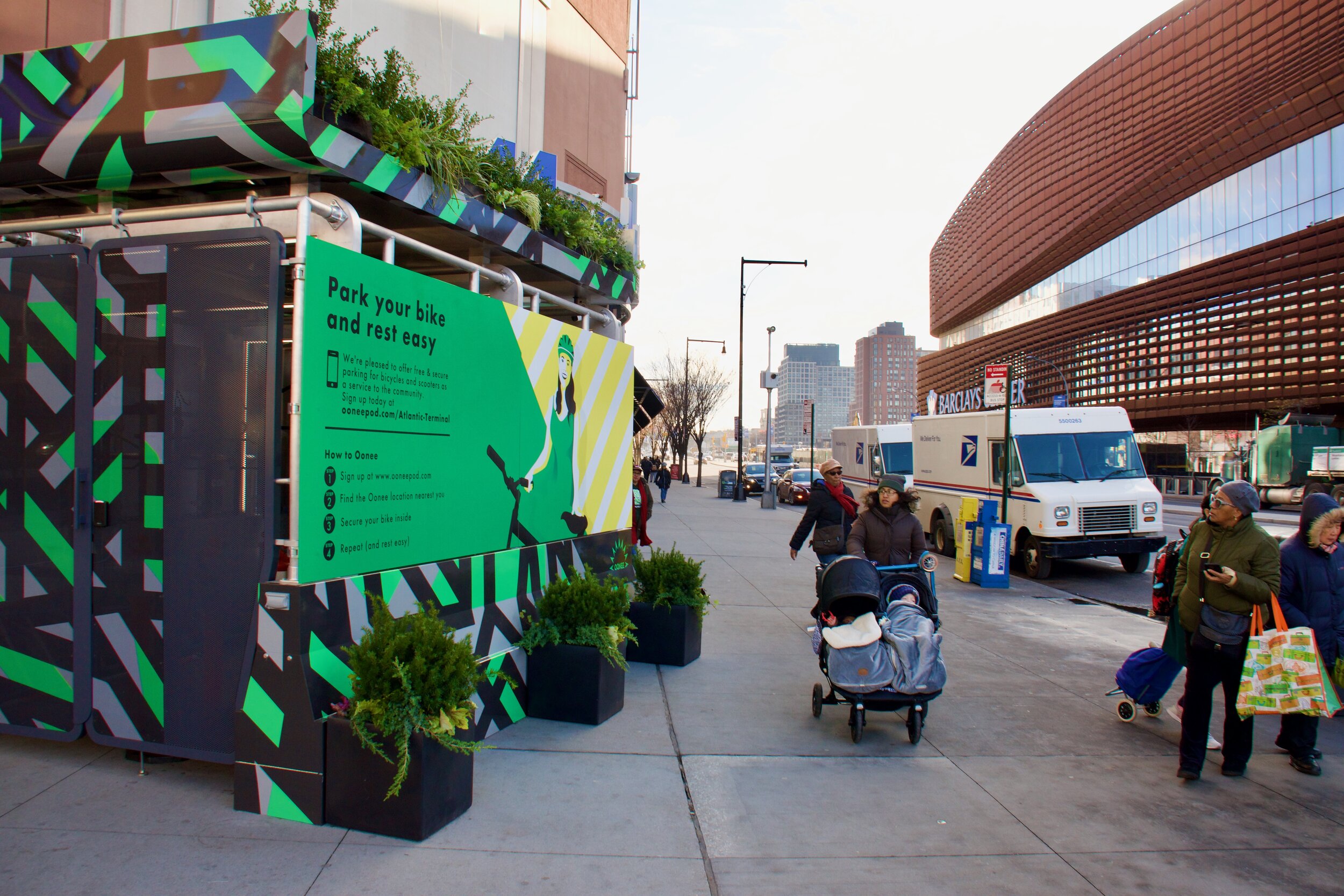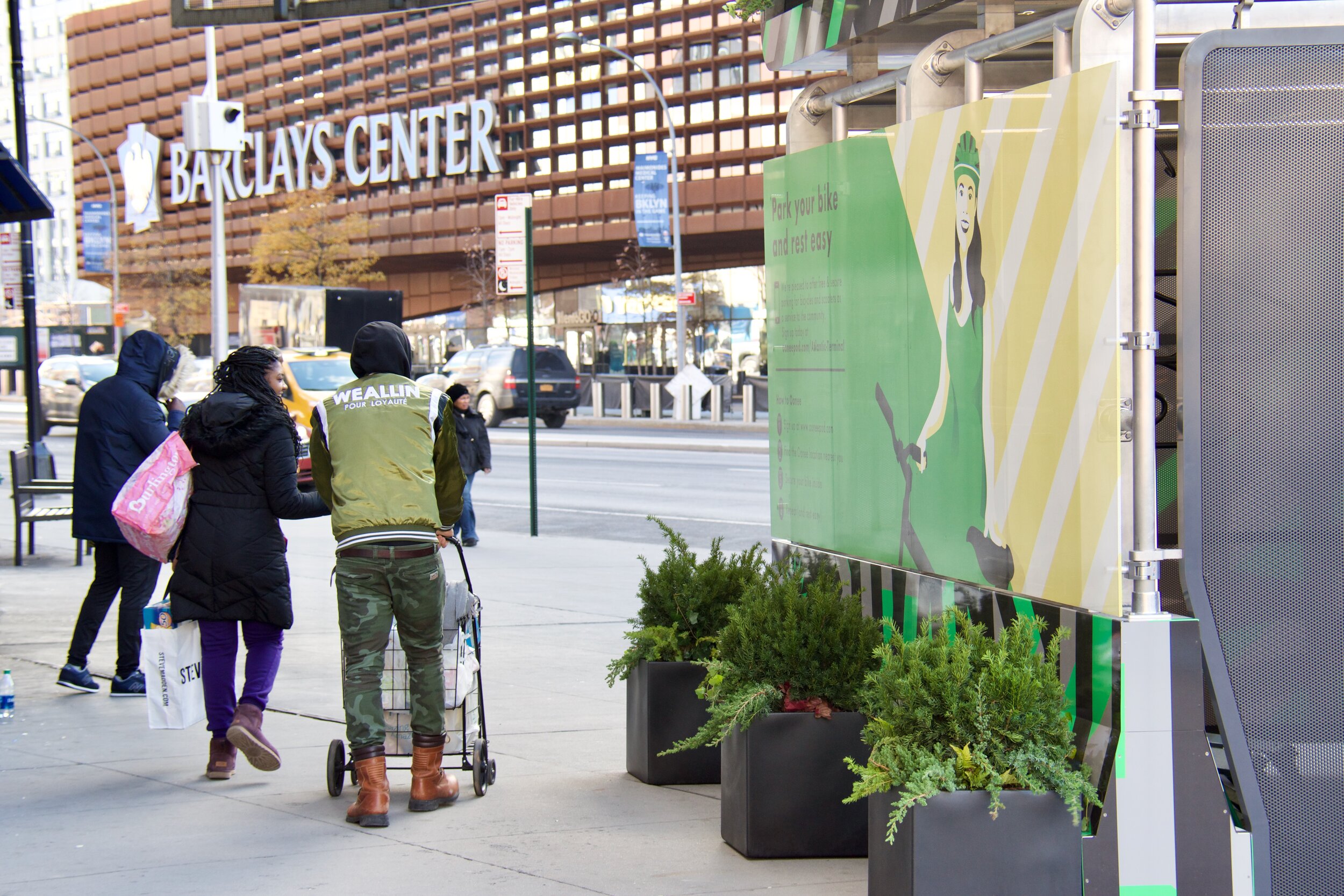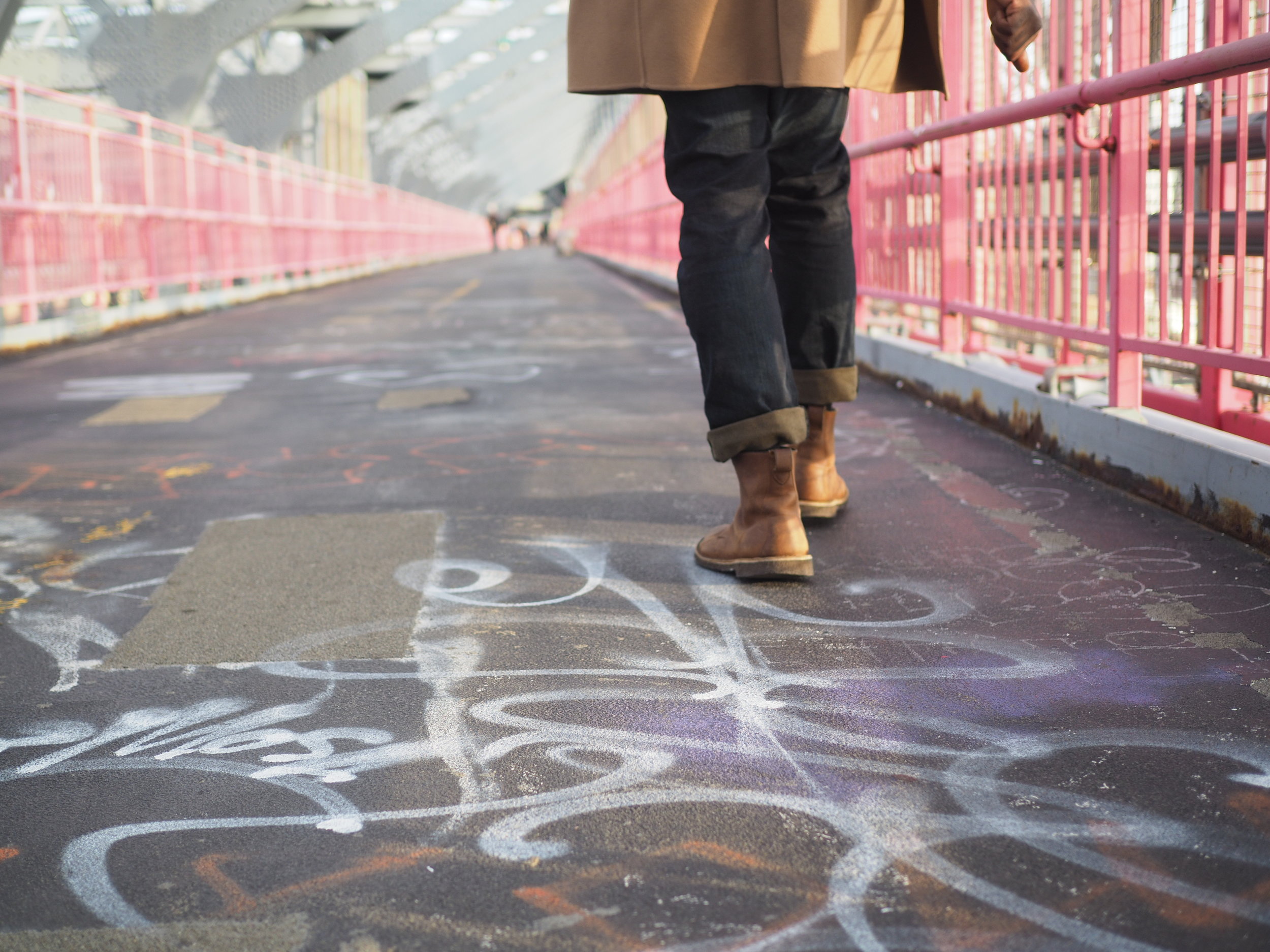
transportation
Whether you are commuting to work or traveling for leisure, transportation is a major aspect of our daily lives. Disparities in transportation related issues can adversely impact black urban spaces. Despite the challenges, new solutions are invigorating hope.
NYC Congestion Pricing: Could the MTA have done more to curb negative public opinion?
The Metropolitan Transportation Authority (MTA) launched its Congestion Pricing Program aimed to relieve traffic in downtown and midtown Manhattan with toll revenue allocated to regional transit investments. A Siena College Poll found nearly two-thirds of New Yorkers opposed the Congestion Pricing Plan. Could the MTA have done more to curb negative public opinion? Here are Blackandurban’s key takeaways on how the MTA could have ]improved the public’s perception of New York State’s Traffic Mobility Act, which has set the stage for Congestion Pricing:
The Metropolitan Transportation Authority (MTA) launched its Congestion Pricing Program aimed to relieve traffic in downtown and midtown Manhattan with toll revenue allocated to regional transit investments. The new variable pricing plan would charge passenger vehicles and trucks to access anywhere south of 60th Street, up to $9 during peak hours, with increases taking effect in 2028 at $12, and in 2031 at $15. Therefore, all vehicles crossing the East River bridges are now subject to the congestion pricing charge. The MTA offers discounts, tax credits and exemptions to some drivers entering the congestion zone. In 2019, after the State of New York passed the Traffic Mobility Act, the Regional Plan Association released the most comprehensive report on the impacts and opportunities of NYC’s Congestion Pricing Plan. Transit and transportation planners understand the benefits of the program generating $1 billion annually to fund major capital investments. But the program has been off to a rocky road since those benefits are lost in translation to the general public, in which there is little support.
The complexity of the pricing plan and elusive investments doesn’t help with positive public perception for the congestion pricing program. Even if only a mere two percent of the working poor would potentially pay a congestion charge, the name of the new program leaves the public to perceive it as a commuter tax, with little focus on its benefits – potential transit investments. The implementation of congestion pricing in New York continues to be unfavorable during a time when New York City was crowned the most expensive city in the world, while salary and wages remain near stagnant, and regional transportation and transit agencies continue to raise fares and tolling fees. New Jersey Transit (NJ Transit) increased fares by 15% on July 1, 2024; the Port Authority of New York and New Jersey has approved a fare increase for PATH trains, raising the cost of a ride by 25 cents to $3, effective January 12, 2025; Port Authority announced that new toll rates will go into effect starting Sunday, Jan. 5. The toll to enter New York via the Lincoln and Holland tunnels, the George Washington, Bayonne and Goethals bridges, and the Outerbridge crossing will increase $0.68. and there is speculation the MTA intends to increase fare prices to $3 later in 2025. Whether it is bad timing or high transportation costs, the Traffic Mobility Law: Congestion Pricing has been unfavorable to commuting New Yorkers outside the congestion zone, because of the perception of an increased high cost of living, with little return in value.
In fact, by April, 2024, a Siena College Poll found nearly two-thirds of New Yorkers opposed the Congestion Pricing Plan. The good news, commuters will eventually adjust, the bad news, the program, and the unknown Traffic Mobility Law behind it, is starting off as widely unpopular, with multiple litigation battles.
Could the MTA have done more to curb negative public opinion? Here are Blackandurban’s key takeaways on how the MTA could have improved the public’s perception of New York State’s Traffic Mobility Act, which has set the stage for Congestion Pricing:
1. Bad Figure of Speech = Bad Publicity
The terminology “Congestion Pricing” is a synecdoche for New York’s “Traffic Mobility Act”, which was passed by New York State legislature in 2019. This means Congestion Pricing is one aspect of the Traffic Mobility Law, but the term has been publicly used to describe the entirety of the law. This may have been the MTA’s largest shortcoming to such a transformative policy, in which the public has deduced to a new toll – a tax.
2. The Traffic Mobility Act has potential to be as Influential as Mexico’s Mobility and Road Safety Law
“The Traffic Mobility Act”, as it stands, is a good start, but has the potential to be more comprehensive. As it stands, it is elusive, and hard for the public to digest. Semantics is important when it comes to public policy. For the public, the terminology of the law, could have been broader and more legible for public consumption to encompass the goals of the Traffic Mobility Act, such as implementing congestion pricing, reduce roadway congestion, and increase funding for transit mobility and accessibility. Perhaps the next step would be to complement the State’s roadway safety laws for a comprehensive approach to transit and roadway mobility and safety. (Blackandurban’s subsequent piece will illustrate how Mexico was able to pass legislation encompassing both roadway and transit safety and mobility via: Mexico’s Mobility and Road Safety Law. A different name of the law, such as: “Safe Roads, Transit Mobility and Congestion Mitigation Law” could have won more of the public’s favor.
3. Conduct a Robust Public Education Campaign and Marketing Initiative around a Broader Safe Roads, Transit Mobility and Congestion Mitigation Law
The Traffic Mobility Act, required “A testing period of at least 30 days and a public information campaign of at least 60 days prior to the operation date”. In 2023, the MTA had therefore conducted four hearings, virtual and in-person, where the public will have the opportunity to comment on the proposed plan and suggest amendments before a final vote in the spring. The times and dates were as followed:
a. Thursday, Feb. 29, at 6:00 p.m.
b. Friday, March 1, at 10:00 a.m.
c. Monday, March 4, at 10:00 a.m.
d. Monday, March 4, at 6:00 p.m.
The hearings were held on the 20th floor of 2 Broadway in Manhattan in which there was also a Zoom option.
This may have been the MTA’s second largest shortfall. Although, a public comment period via Board hearing is typically required to receive input regarding implementing public policies of this nature, the Law, and MTA failed to educate the public on the benefits, procedure and jurisdictions involved in the congestion pricing plan. From the start, the focus of the Traffic Mobility Law: Congestion Pricing was centered on the congestion zone, with very little marketing and engagement with residents and business owners outside the congestion zone. An actual robust public information or education campaign, should have positively portray a more extensive “Safe Roads, Transit Mobility and Congestion Mitigation Law”, with context-sensitive transit investments, and surface transportation projects linked to the City’s Vision Zero Initiative, in each community. The marketing should include: a slew of digital media advertisements, including social media, and television ads; newspaper ads; meetings with community leaders; and engaging residents at pop-ups, outside the congestion zone.
The focus of the public education campaign should have centered around New York City’s outer boroughs, suburban communities, including New Jersey and Connecticut communities. There was no intentional educational outreach conducted to these communities that would increase their buy-in about the law.
4. Implement Transit and Bicycle Improvements Prior to Starting Congestion Pricing
The RPA recommends implementing transit and bicycle improvements prior to starting congestion pricing. Although MTA and NYCDOT has always been committed to upgrading road and transit infrastructure, with MTA typically citing budget constraints, both micromobility and transit investments leading up to Congestion Pricing were simply not enough. In addition, major investments in transit deserts with low- and moderate-income households, outside of the congestion zone, throughout the city and region, should have been tied to a broader Safe Roads, Transit Mobility and Congestion Mitigation Law. London has implemented congestion pricing, but with an already robust transit network that could accommodate its 15 million population.
5. Adopt Specific Objectives and Metrics
Again, the RPA has it right, by recommending to adopt specific objectives and metrics to meet traffic, environmental, and health goals and ensure that benefits are equitably shared, and just as importantly, to make those goals public, and “metrics and monitoring should measure neighborhood impacts, and transit improvements should prioritize neighborhoods with fewer transit options, lower household incomes, and disproportionate pollution impacts.”
6. Substantial Revenue should be Allocated to New Jersey Transit and Port Authority’s PATH
New Jersey leaders should have had a seat of the table from the beginning of congestion pricing meetings, and congestion pricing revenue allocations and infrastructure investments to NJ Transit and PATH should have been made to the public, and early to gain public buy-in. Northern New Jersey contributes 25% of Metropolitan NYC’s GDP, second after the New York City municipal boundary, which contributes 49% of the region’s GDP, and The number of people commuting to New York City from northern New Jersey grew 62% from 276,000 in 1990 to 447,000 in 2022.
“Singapore, which first first pioneered Congestion Pricing in 1975, and European cities thereafter, are not burdened by its negative consequences, as American cities are, in the context of reparative planning. Therefore its easier and less controversial to implement Congestion Pricing in European cities in a more fair and equitable manner. New York City’s pluralism, with its historically unjust land use and transportation practices, should justify a unique approach, and thus, think outside the box, and expand the Congestion Zone in New York. ”
7. How do Black and Brown Communities Perceive the Traffic Mobility Law: Congestion Pricing
Courtesy of NYC Regional Planning Office
Drastic population shifts of Black/African American and Latino ethnic groups from the city’s center, (including within the congestion pricing zone) to the suburbs in the past decade illustrates the two phenomenon affecting their communities: gentrification and displacement. According to a New York Post poll, 72% of Black New Yorkers oppose the congestion pricing toll. The toll is also opposed by: 62% of Latinos. While only 10% of Black and Brown commuters drive into Manhattan, Traumatic events such as gentrification - where wealthier residents are relocating to a neighborhood in which goods and services therefore increases with the stress of potential displacement – its reasonable for Black and Brown groups to be weary of the Traffic Mobility Act – Congestion Pricing public transit benefits. Historically, Black and Brown communities have been underserved by government’s capital investments, adding to the distrust in the civic system. Many Black and Brown residents believe agencies only start to invest in their communities after an influx of white residents relocate.
Black and Brown groups may view the new Traffic Mobility Law and Congestion Pricing to be an additional tax, (whether they take public transit or drive into the city), with little or no benefits to their communities. This is where specific and intentional and thoughtful marketing and public education campaigns, and outreach could have helped with the program’s public perception in communities outside the zone, and specifically in Black and Brown communities experiencing gentrification and on the verge of displacement.
Unfortunately, there are adverse effects to the Traffic Mobility Act’s Congestion Pricing, in 2023, the Black Institute released a scathing report, calling out the adverse effects of congestion pricing to Black and Brown communities within the city, Just Call it a Black and Brown Toll: An Analysis of the MTA’S Proposed Congestion Pricing Plan, in which they wrote “…the anticipated rise of air pollution in the Bronx and Harlem, corresponding to an expected rise in traffic as commuters seek to avoid congestion tolls. These are neighborhoods that house an overwhelming majority of Black and brown residents, who will suffer the economic and environmental effects of increased pollution.” In 2022, the South Bronx Unite published the concerns of the South Bronx community: “the Cross Bronx Expressway would experience more traffic – potentially upward of 700 extra trucks a day – under all of the seven scenarios of congestion pricing studied by researchers, according to a report released by the Metropolitan Transportation Authority and being shared with communities. And the highway and borough could face more pollution, too.”
8. To Be Fair, The Congestion Zone Should be Expanded
The Cross Bronx Expressway near Jerome Avenue, Bronx, NY. File photo/Adrian Childress & Courtesy of AMNY
According to FHWA’s National List of Major Freight Highway Bottlenecks and Congested Corridors Federal Highway Administration (FHWA) Freight Mobility Trends: Truck Hours of Delay, 2019, 3 out of the top 10 most congested interstate highways in the United States are located in New York City, with the most congested being the Cross-Bronx Expressway.
Singapore, which first first pioneered Congestion Pricing in 1975, and European cities thereafter, are not burdened by its negative consequences, as American cities are, in the context of reparative planning. Therefore its easier and less controversial to implement Congestion Pricing in European cities in a more fair and equitable manner. New York City’s pluralism, with its historically unjust land use and transportation practices, should justify a unique approach, and thus, think outside the box, and expand the Congestion Zone in New York. In fact, the Mayor of London is supportive of expanding their congestion zone, “although there are no plans to extend the boundary of the central London Congestion Charge Zone. Proposal 21 of the draft Transport Strategy sets out that Transport for London would support boroughs that wished to introduce local traffic reduction measures, including, for example, local congestion charges.
9. The Traffic Mobility Act Should have A Focus on Safety and an Emphasis on Subway Expansion
Courtesy of MTA - Interborough Express - System Map - Brooklyn/Queens
If you’ve lived in New York City in the 80s to the early 2000s, the recent media coverage of subway system probably doesn’t startle you. In this case, bad publicity is not good publicity. To ensure adequate ridership, it’s important for MTA’s customers to have a high perceived level of safety. Investments from the Traffic Mobility Law should allocate funding to social service and health programs to assist homeless and the mentally ill who dwell in the subway’s trains and stations.
Although the MTA has cited funding allocations from the Traffic Mobility Law: Congestion Pricing Program to capital expansion projects such as the Interborough Express linking a new light rail between Bay Ridge, Brooklyn and Jackson Heights, Queens; and continuing phase 2 of the send avenue subway extension into Harlem, Manhattan. But with $1 billion annual allocations to the MTA, more subway expansion projects should have been noted, especially in rail-scare parts of the city such as Queens, perhaps extending a subway line to LaGuardia Airport.
Courtesy of MTA - Interborough Express - Station Rendering - Brooklyn/Queens
Social Reform Through Federal Highway "Capping" Projects
Two new bridges at South High Street and South Front Street would span the rebuilt freeway. Renderings courtesy of Ohio DOT.
The technique to “cap” highway overpasses is not a new transportation planning/engineering idea, but it should be emphasized as a solution to mitigate the effects of structural racism that has and continues to affect millions of African-Americans and other vulnerable populations throughout the United States. Both elevated and below grade interstate highways serve as physical barriers that divide once thriving Black/African-American neighborhoods.
If the Federal Highway Administration is intentional about assisting our nation’s efforts in healing and reconciling race relations from an overwhelming structure of systemic racism, it shall consider allocating federal capital funds to state DOTs for “capping” projects and programs as a means to correct the agency’s own wrong-doings.
Though there are various strategies to mitigate the adverse acoustic and aesthetic impacts from elevated highways, in recent years, more attention have been given to cost-efficient social mitigation solutions for highways in the below-grade interstate system. Partly or holistically “capping” below-grade highways is used by Ohio DOT and other state DOTs to reduce the vehicular noise and unpleasant aesthetics create by a linear monolith of concrete and asphalt. More importantly, “capping” is seen as a tool to encourage economic growth to a local economy.
Capping, or highway deck parks are a way to create new acreage and/or provide green space that can spur downtown development. Capping a highway to create a park also can reconnect urban neighborhoods sliced apart by the expressway building boom of the 1960s and ’70s.
“When it comes to systemic racism, the United States’ federal government was not only an instigator, but a perpetrator.”
There are many capping projects either complete or proposed throughout the U.S to convert unused air space to vibrant public spaces. A couple of the projects include Boston’s Big Dig to form the Rose Fitzgerald Kennedy Greenway and a section of Seattle’s Interstate-5 conversion to Freeway Park.
Highway Capping as a Strategy for Social Justice Reform.
The FAST Act (Fixing America's Surface Transportation - Act) was set to expire at the end of 2020, but Congress recently extended it for one more year. The next FAST ACT equivalent should include provisions focused on equity in mobility and surface transportation. A paradigm shift should pressure the United States FHWA to allocate funding towards programs to once again connect neighborhoods and contribute to a vibrant local economy while accompanying proven safety countermeasures to reduce pedestrian, micro-mobile and automobile collisions. Therefore, implementing highway overpass “capping” projects should serve as the agency’s main strategy to rectify previous inequitable it has set forth in environmental justice communities of concern.
When it comes to systemic racism, the United States' federal government was not only an instigator, but a perpetrator. Various federal agencies, including the Federal Highway Administration, have worked to segregate and economically stagnate African American neighborhoods.
Starting in the mid 20th century, car-dependent mobility from the suburbs were prioritized for white commuters to America’s central business districts. As previously mentioned in Racism in Transportation Policy is Inconvenient, Unjust and Can Have Deadly Effects, the federal government, via the federal highway administration, has bulldozed through Black communities as they were deemed lacking any inherent value. Humboldt Parkway, which housed Highway infrastructure was constructed form a top-down approach with little to no community input and environmental reviews, physically dividing poor and middle class Black communities, devastating their social fabric, local economies and self-sufficiency.
“If President Elect Biden and Vice-President Elect Harris are truly intentional about rectifying the wrong doings to Black/African communities, then their administration can start in the United States Department of Transportation’s Federal Highway Administration (FHWA).”
For example, according to A City Divided: A Brief History of Segregation in Buffalo, “the construction of the Scajaquada Expressway occurred at a similar time; however, given that the affected population was primarily white and middle-class, displaced residents had more options and could afford to move to different neighborhoods and the suburbs.62 For the East Side, construction of the Kensington Expressway happened at the same time as several other projects that resulted in residential displacement, and the primarily black population had very little housing mobility; this confined them to other sections of the East Side. As a result of the Kensington and related developments, the poorest, most segregated communities were subject to more air pollution and lost access to services and key institutions like banks and grocery stores”.
Humboldt Parkway was designed by Fredrick Law Olmsted, America’s pioneer Landscape Architect. The Parkway once featured a distinct beautiful tree-lined boulevard. However, after the Federal Highway Administration decided to connect Buffalo’s suburbs to its downtown, the agency eviscerated the trees and surrounding homes in its way to make way for the Kensington Expressway.
From both logical and ethical perspectives, FHWA has helped perpetrate social inequities, economic stagnation, and public health disparities in African American communities and therefore FHWA should provide the funding to fix these aforementioned problems.
If President Elect Biden and Vice-President Elect Harris are truly intentional about rectifying the wrong doings to Black/African communities, then their administration can start in the United States Department of Transportation’s Federal Highway Administration (FHWA). A restructuring and re-purposing of funds in FHWA can and should allocate more funding to MPOs and highway agencies to add highway capping in their capital budget line item as an environmental justice reformation program.
Cost is the Primary Criticism to Highway Capping Projects, but its a Misconception
Depending on the scale of the project, some capping projects can be exuberant, but most, which includes surface mobility safety improvements costs roughly the same as a regular overpass reconstruction project. The Boston Big Dig project cost an estimated $15 billion, but smaller, yet comprehensive projects consisting of 6 overpasses can cost between $300-$700 million dollars, depending on the project’s size. In those comprehensive projects, capping just one overpass, can range from from $53-million to $62-million.
Capping would directly rectify social and physical problems in communities the Federal Highway Administration planned sub-level highway routes. Neighboring communities, too, would benefit from various benefits including economic development and meaningful infrastructure upgrades.
The Obama administration gave deck parks a push, offering a $19 million grant for the Pittsburgh park. Then-Secretary of Transportation Anthony Foxx in 2016 said that urban highways had exacerbated economic inequality by devastating African-American neighborhoods for the benefit of suburban drivers.
Benefits to a Highway “Capping” Project Include:
Safety corridor improvements
Land use development, creates new space for development.
Old Bridges are replaced or reinforced after their lifespan has expired.
Economic growth through property values
Greater tax base
Environmental sustainability by adding biophilic design elements
Provides a barrier that decreases noise pollution
First Look: Oonee Atlantic Terminal, Downtown Brooklyn
This new Oonee pod is positioned at Atlantic Avenue and Fort Green Place, in front of the Atlantic Terminal entrance and across the street from the Barclay Center.
The creators of Oonee are not slowing down anytime soon. Back in May, we met with co-founder Shabazz Stuart and discussed Oonee’s origins and infrastructure. Recently, we caught up with Shabazz to get an inside look at Oonee: Atlantic Terminal - before the public grand opening later this week. In this question/answer interview style piece, we discussed the company’s community involvement and intergovernmental and business efforts to get this pod running.
Black+Urban: It looks like Oonee is heading to Brooklyn! What made you select this location? Does it hold a special place in your heart?
Shabazz Stuart: Brooklyn absolutely holds a special place in our collective hearts. I was born and raised in Brooklyn, our company is headquartered in Brooklyn, our solution was developed and integrated in Brooklyn, and our beta testing unit was deployed at the Brooklyn Navy Yard for four months. Brooklyn is home for Oonee and we’re so blessed to be back. Atlantic Terminal ownership was the one who reached out to us about a year and a half ago, with an interest to bring secure cycle parking facilities to the property.
Black+Urban: When can we expect to see Oonee at the Atlantic Terminal?
Shabazz Stuart: The kiosk will be open to the public on Friday, December 13th. Installation was completed just last week, and Membership is free to the public.
Black+Urban: What are some of the new designs and technologies that cyclists can expect?
Shabazz Stuart: We’re excited to offer a number of new features within this installation. We have built in outlets for e-bike and e-scooter charging and an air-pump for tires. Users will also notice lights that are 100 percent brighter than our previous installations. Pedestrians will have the ability to charge their phones and mobile devices on the exterior of the kiosk. From a maintenance and operational standpoint, we’ve built an internal irrigation that will automatically water the plantings on the roof.
“The black experience has significant overlap with the urban lifestyle. Here in New York, roughly 1 of 4 people are Black. The same is true in most other large cities like Houston, Philadelphia and Chicago. In our nation’s capital, about half the residents are Black.
Yet, black perspective is largely absent from the planning and design process that is shaping these growing cityscapes. ”
Black+Urban: It has been said that this is your most ambitious project ever - how so?
Shabazz Stuart: The regulatory and permitting challenges at this location were unprecedented for us. Located entirely on private property, this structure is permitted like any other building. This meant hiring an architect to complete a building filing, working with an expeditor, and bringing a general contractor on-board to oversee construction. This process not only added about four months of time to the deployment process, but it resulted in a budget that was 40 percent higher than previous deployments.
Even so, the Department of Buildings had never quite evaluated a building like ours; we’re essentially a storage shed, but with an innovative method of construction, with movable and reusable components. We were, thankfully, able to work with DOB leadership and City Hall to identify an interim permit, which allowed us to deploy quickly. We’re hoping to work with them in the future to ensure that the kiosk can remain in place with minimal red tape.
During night or day, the Oonee pod - Atlantic Terminal fits seamlessly within the urban environment.
Black+Urban: Oonee is at the crossroads of transportation, policy, urbanism, with elements of entrepreneurial and start-up nuances; what has the Black experience lended to navigating these varying disciplines and business structure?
Shabazz Stuart: The black experience has significant overlap with the urban lifestyle. Here in New York, roughly 1 of 4 people are Black. The same is true in most other large cities like Houston, Philadelphia and Chicago. In our nation’s capital, about half the residents are Black.
Yet, black perspective is largely absent from the planning and design process that is shaping these growing cityscapes.
Traditionally urban planning and design have been mostly white. This isn’t surprising as the degrees required for certification as a planner, architect or designer are often unaffordable or out of reach for many working class minorities. The net result, however, is that Black voices are largely left out at the staff level of urban planning conversations.
The same is increasingly true within the emerging urban entrepreneurial field. In the 21st Century, we’re seeing private actors play a larger role in the evolution of the cityscape; for example Lyft operates Citibike, while JcDecaux, an outdoor advertising conglomerate, operates the city’s public bathrooms, bus shelters and Newsstands. LinkNYC was developed by Intersection, a company backed by Google.
More recently, we’ve seen the rapid of micro-mobility companies like Bird and Lime, which also are tremendously impactful to the streetscape.
Here too, Black voices are largely absent. Startup financing is difficult for minorities; less than 1 percent of venture capital monies went to Black entrepreneurs in 2011. Unfortunately, this means that African-Americans can face extreme challenges in getting the funding to launch their urban focused ideas.
If we are to develop smarter, more effective planning solutions for cities; we must incorporate the voices of the communities that will be served by these new solutions.
Though the fundraising journey was difficult for us (we haven’t raised any venture capital dollars as of yet) my experience growing up Black and working class in New York certainly impacts my perspective with Oonee, our approach to product development, and how we entered the market.
For example, one of the company’s most differentiating features is our commitment to affordable pricing for cyclists. While some have asked us to consider steeper prices in excess of $30 per month, I know that many in our community simply will not be able to afford this, especially when secure bike parking is more likely to function as an additive service (we expect our users to still use public transit and bikeshare). Thus, I made it a priority for us to design a model that shifted the financial burden to advertisers and sponsors.
Inside the Oonee pod- Atlantic Terminal includes vertical bicycle racks, security system cameras and LED lights.
Black+Urban: Since we last spoke, your first kiosk at Water-Whitehall was forced to close, can you tell us what happened there? How are you planning to avoid a similar fate at Atlantic Terminal?
Shabazz Answer: Essentially, the Department of Transportation needed time to think through the rules and regulations regarding advertising on the kiosk. We felt that we had been transparent with everyone regarding our sustainability model and our reliance on advertisements to finance the deployment and ongoing operations. After waiting for nearly a year, our time simply ran out. The company was on the verge of insolvency. The deactivation of the Water-Whitehall installation was a very painful and difficult time for us and our community of users. It was hard to say goodbye to the more than 150 people that relied on that installation for their ongoing commuting needs. We definitely look forward to working with the Department of Transportation for a network of installations in the future once there is clarity on our ability to advertise on the kiosk.
To avoid a similar circumstance at Atlantic Terminal, we’ve spent much more time engaging with the community, and local elected officials in advance of the deployment. Though this installation is on private property, we hope the relationships that we’ve built, combined with the merits of the infrastructure itself can help us avoid another deactivation.
Black+Urban: You’ve mentioned that this kiosk has gone through the “building” permitting process, why did you opt for this route? Is this common for structures not occupied by people?
Shabazz Answer: Yes, every structure above a certain size on private property in New York City must be permitted by the Department of Buildings. Moreover, although people don’t live in our structure, it is intended for ongoing public use; people must be able to safely enter, stand inside and exit, which happens dozens of times a day.
Legally speaking, there just isn’t a way around the building permitting process.
Black+Urban: What are some of the challenges with Oonee being considered a permitted building?
Shabazz Answer: The permitting process for a building was intended for much larger, more complex structures, it was definitely a long and expensive challenge for us to put the kiosk through it for the first time, especially since the design had largely been completed. We’re grateful that City Hall, Borough Hall and Speaker Corey Johnson were there to help us navigate the process.
Our kiosk had to conform to zoning and fire code requirements; there was even talk about if we would have to integrate a sprinkler system or bathroom into the design. Ultimately, we were able to work with the Department of Buildings to find a simplified, interim path forward. Despite the small size of the structure, the cost of architects, expeditors and structural engineer certification exceeded $25,000.
The Oonee Team: From left to right, Matt Moates (Operations Manager), Shabazz Stuart (Founder and CEO), Manuel Mansylla (Co-Founder and Creative Director), Yosef Kessler (Operations Manager), and Rashid Sumler (Community Experience Manager).
Black+Urban: What actions can local government take to reduce the barrier to entry for entrepreneurs providing solutions to the built environment?
Shabazz Stuart: We hope the popularity and success of the installation will encourage the New York City council to introduce a streamlined process for permitting these types of structures. One simple permitting and rules process for bike parking infrastructure on public and private property will make it much more affordable to install solutions like Oonee on public and private property.
In the long term, we hope the City will incorporate structures like Oonee into the streetscape franchise, thus allowing private operators to bid on opportunities to install a number of locations on public property and right-of-way utilizing advertisements, sponsorship and other revenue models.
Black+Urban: What’s next for Oonee in 2020?
Shabazz Stuart: We’re working with our public and private partners to bring a number of new locations to the New York region. We hope to have some announcements soon.
Join us next Friday December 13th at 4pm, along with Brooklyn Borough President Eric Adams, City Council Majority Leader Laurie Cumbo and The Office of the City Council Speaker Corey Johnson as Oonee officially launches Brooklyn's first secure parking & service hub for bikes! Please click here to RSVP.
Oonee
Company Profile
Founders: Shabazz Stuart and J. Manuel Mansylla
Active Locations: Downtown Brooklyn, NY and Journal Square, Jersey City, NJ.
For More Information, please visit Oonee’s website.
Instagram: @ooneepod
All photos are courtesy of Shabazz Stuart
Provide Comments on our Social Media Platforms Below!
Oonee pod standing defiantly, yet welcoming, as a win for Brooklyn residence and commuters.
Transit Policing: Is it Necessary? The Making of America's Police-State Capitol
Co-Author: Kyle Williams
Last month, New York City’s Metropolitan Transportation Authority (MTA) announced it will hire 500 new transit police officers to resolve the “quality of life” issues in NYC subway system. These 500 new cops will assist the NYPD Transit Bureau. The Bureau is responsible for the safety and security of MTA’s passengers, initiated by contract with the MTA under Mayor Guliani. This might sound like a policy straight out of the infamous Batman trilogy, however, it is becoming a stark reality for the victims of the MTA police: the homeless and “fare-beaters”, of which, the police appear to target primarily people of color.
New Yorkers and concerned citizens throughout the country are outraged at the policies enacted by Governor Cuomo. Last week, police officers were seen brawling with what appears to be high school students at the Jay-Street Metro-Tech Station’s platform in Downtown Brooklyn. Adding insult to injury; MTA transit cops were then seen ambushing a young Black man (who allegedly evaded the subway system’s $2.75 fare) with guns. Many people are describing his arrest as alarming.
Last weekend, hundreds of New Yorkers took to the streets to protest the subway system’s police-state policy. They are asking leaders like Mayor DeBlasio and Governor Cuomo to reverse the policy. Despite the appearance of police harassment, people are also taking to social media to question the MTA’s policy on camera installations at turn styles.
Fare-Free System
Other transit agencies like Buffalo, New York operate a light rail system with a free-fare zone and in September 2018, Dunkirk, France officials have launched a free bus system. The landlocked country of Luxembourg, adjacent to Belgium and Germany, is looking to implement a nation-wide free transit system in 2020.
The question of a fare-free MTA system seems far-fetched; especially since the organization is projected to operate in a deficit through 2021.
However, although MTA’s 2019-2022 budget suggests that there’s a loss in revenue due to fare-evasion, the budget does not disclose its monetary loss. In fact, MTA includes fare-evasion with a wide range of other impacts to revenue loss, such as “planned subway service changes to accommodate construction and maintenance/repair work and increases in telecommuting and the use of e-commerce have all impacted utilization levels.”
The bigger question for now remains whether investments into transit cops to fight fare-evasions is even worth-while. The starting salary for an MTA Police officer is $42,000. Upon completing 7 years of service the top pay is $100,368. A cost-benefit analysis is not necessary to determine, the efforts to stop fare-evaders is costly, time-consuming, and raises discrimination and aggressive policing concerns.
“Enough Money to Hire Cops, and Install Cameras, but not Enough to Fix a Failing Transit System.”
We are at a time where capital investments into the City’s subway system are critical, and such costly efforts into fare-evading remains futile for fixing the MTA. Protests in Chile have received world attention due to the government announcing a hike in transit fares. Some conservatives and police allies do not agree with the recent protests in NYC, calling it unwarranted.
Furthermore, important questions remain. Why did MTA choose transit policing as an expensive solution to avoid a budget deficit? What can we do as fellow citizens to resolve the issue of persistent and overly aggressive victimization by police force for what seems to be a trivial crime? Should the MTA consider an overall system-wide free fare? Please let us know in the comments.




